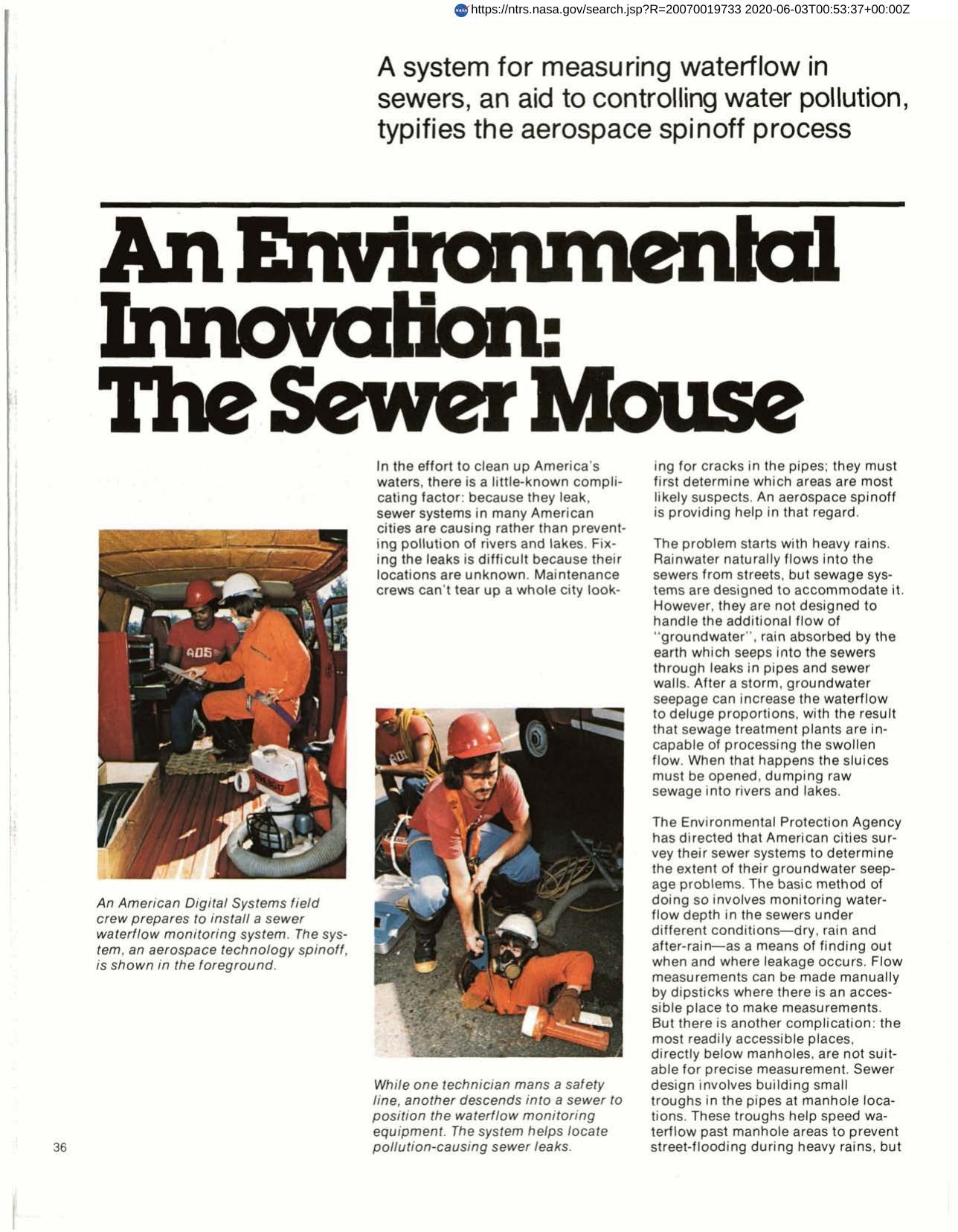
An Environmental Innovation: The Sewer
American Digital System's inventor Peter Petroff, a former NASA employee, designed and manufactured a sophisticated sewer flow measurement system which is contributing to more effective sewage processing. Key to the system is a device called a mouse because its shape suggests that of the small rodent and it has a tail" of long cables which are connected to a data recorder mounted a considerable distance away under a manhole lid. The mouse bolted to the floor of a sewer pipe and streamlined to prevent waterflow disruption which would cause inaccurate readings houses a flow-measuring transducer. The transducer senses differences in pressure enabling calculation of the amount of water above it. The pressure reading is translated into a water depth reading and relayed through the mousetail cables to the recorder. Typically 50 to 100 "mouses" are installed throughout a city's sewer system. Each provides a water depth reading every 15 minutes around the clock. Every few days field crews collect the stored data form the recorders and transfer it to a central computer for processing and evaluation. System does not pinpoint specific leaks. It does provide clues as to suspect areas for physical investigation; such narrowing of problem zones permits substantially easier and less expensive repairs of leaks."
Full article: http://hdl.handle.net/hdl:2060/20070019733

An Environmental Innovation: The Sewer

An Environmental Innovation: The Sewer


